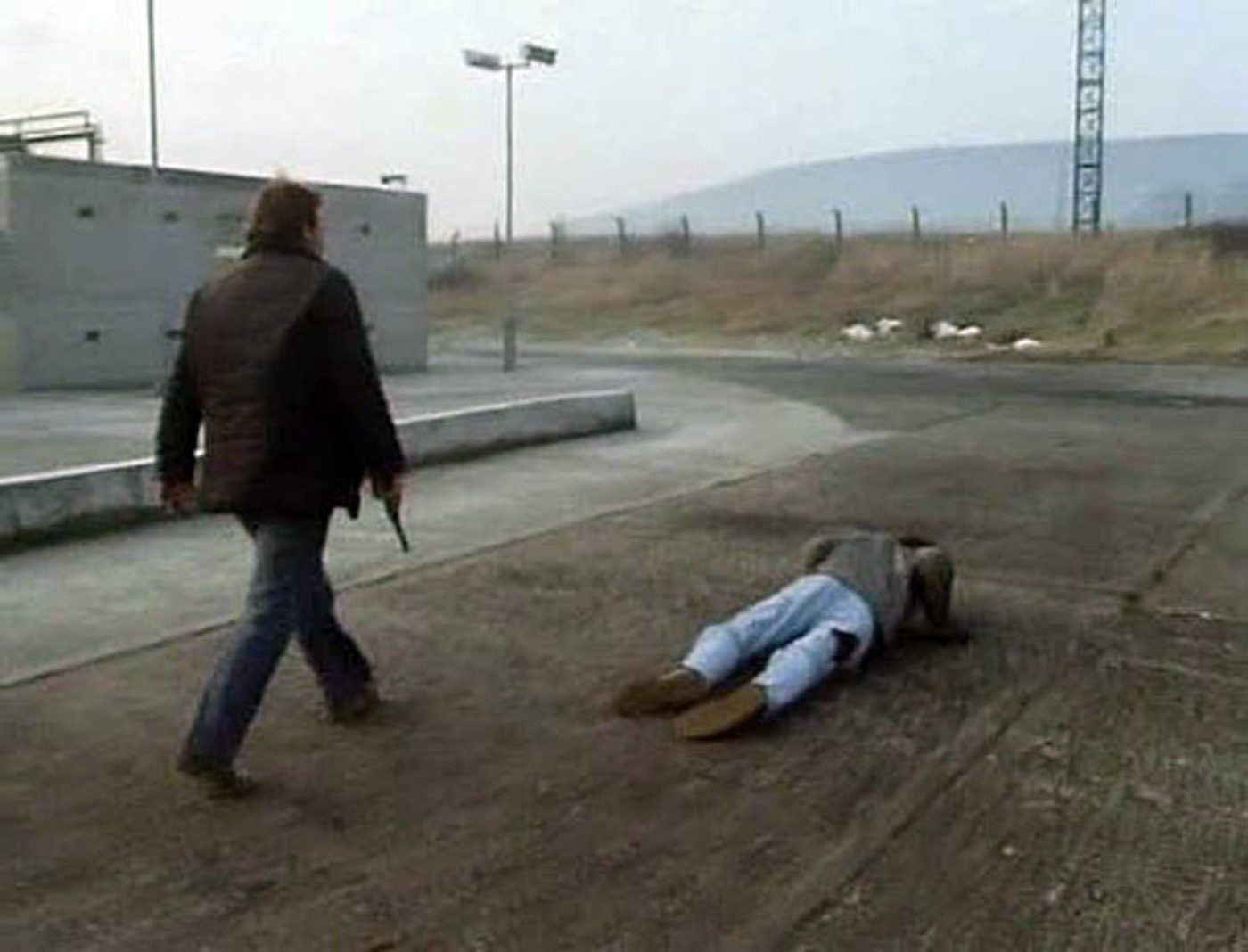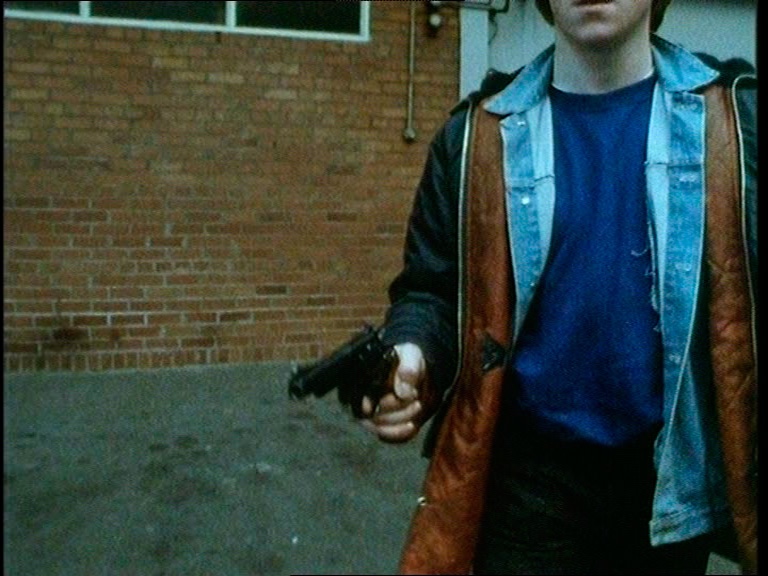Elephant (Alan Clarke) takes place in Northern Ireland in the 1980’s, , when ‘The Troubles’ were occurring, and follows a number of murders that take place throughout multiple sequences in the film. Each sequence follows a particular murder case, and they all follow a similar format of a mysterious and silent person searching frantically for someone, hiding an object and holding a passive expression. When they find that person, they are shown shooting them, fleeing the scene, and then the sequence ends with the scene focusing on the murdered person.
There is only one word said throughout the entire 38 minute movie, and that is a shout of panic from someone who is about to be murdered. Each sequence lasts a different amount of time, some ending in a few minutes, some lasting for 5 minutes. They use the formulaic time spent searching for a victim to build tension, as wide, open and empty spaces are filled with silence, the only sound being the loud and fast footsteps of the soon to be murderer. The director also uses wide shots and long takes, where the person searching will often be very far away from the camera, to emphasise the quietness and emptiness of these spaces, building suspense as we presume the killer gets to closer to their victim. This time spent searching can last for minutes, which drag on in complete silence, and this is done to build tension, as the killings can happen very suddenly, and when they do, they are made to be very shocking.
The killings are sometimes shown in long shots that let us see the murders happen in explicit detail, and sometimes they are shown through close ups to bring the audience closer to the violence. The receptiveness of the murders gets the formulae stuck in the audiences mind, which emphasises the mindlessness and brutality of the killings. At the end of the sequences, the corpses are also shown in close or long shots, which forces the audience to pay attention to the extreme violence that the film is based off. The film is not fun to watch, as the subject matter is so grim and the execution emphasises the brutality of it all, and the repetitiveness keeps it cycling in the audience’s memory.
My personal favourite aspects of the film were the ways that the camera sometimes followed the killer in tracking crab shots or pans to keep our focus on them, and sometimes would show them walking through large spaces in wide long takes to build tension and emphasise that they may be the focus of this scene, but are not the protagonist. It also makes the sequence where the killer is not shown until the end, and the focus is open the soon to be victim. I also remember the shot where an over-the-shoulder shot shows a man approaching another person, who he has just shot, who is crawling on the floor and bleeding, and as he weakly up and closes the long distance between them, tension is built for around 20 seconds, where tension is built and we form sympathy for the victim, and the drawn out moment makes it all the more uncomfortable for the audience to watch, and the inhumanity and uncaring nature of the killing is made clearer through the horror of the moment.



You must be logged in to post a comment.